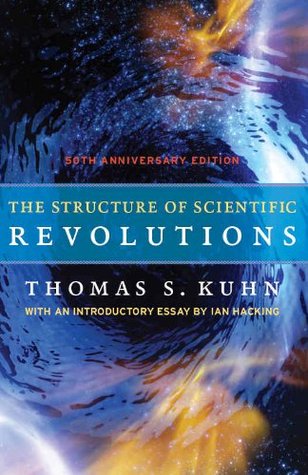More on this book
Community
Kindle Notes & Highlights
It does mean that one should read Kuhn attentively and pay attention to what he actually says.
Philosophical Investigations
One has to acquire an “ability to see resemblances between apparently disparate problems.”34 Yes, textbooks present lots of facts and techniques. But they do not enable anyone to become a scientist. You are inducted not by the laws and the theories but by the problems at the ends of the chapters.
“The student discovers a way to see his problem as like a problem he has already encountered. Once that likeness or analogy has been seen, only manipulative difficulties remain.”
perspicuous
congeries
When was oxygen discovered?
Who first conceived of energy conservation?
grosso modo,
paradigmatic
“effluvium”
recondite.
juxtapose
recondite
conjugating
foci
quantitative laws:
Boyle’s Law relating gas pressure to volume, Coulomb’s Law of electrical attraction, and Joule’s formula relating heat generated to electrical resistance and current are all in this category.
But heat could be released or absorbed in many other ways—e.g., by chemical combination, by friction, and by compression or absorption of a gas—and to each of these other phenomena the theory could be applied in several ways.
These three classes of problems—determination of significant fact, matching of facts with theory, and articulation of theory—exhaust, I think, the literature of normal science, both empirical and theoretical.
corpuscles
penumbral
coextensive.
Normal science, the puzzle-solving activity we have just examined, is a highly cumulative enterprise, eminently successful in its aim, the steady extension of the scope and precision of scientific knowledge.
apothecary,
phlogiston.
dephlogisticated
We can only say that X-rays emerged in Würzburg between November 8 and December 28, 1895.
Lavoisier’s
Paradigm procedures and applications are as necessary to science as paradigm laws and theories, and they have the same effects.
Only as experiment and tentative theory are together articulated to a match does the discovery emerge and the theory become a paradigm.
esoteric
The very fact that a significant scientific novelty so often emerges simultaneously from several laboratories is an index both to the strongly traditional nature of normal science and to the completeness with which that traditional pursuit prepares the way for its own change.
counterinstances,
The decision to reject one paradigm is always simultaneously the decision to accept another, and the judgment leading to that decision involves the comparison of both paradigms with nature and with each other.
tautologies,
Like artists, creative scientists must occasionally be able to live in
a world out of joint—elsewhere I have described that necessity as “the essential tension” implicit in scientific research.
florid
One perceptive historian, viewing a classic case of a science’s re-orientation by paradigm change, recently described it as “picking up the other end of the stick,” a process that involves “handling the same bundle of data as before, but placing them in a new system of relations with one another by giving them a different framework.”
In both political and scientific development the sense of malfunction that can lead to crisis is prerequisite to revolution.
Political revolutions aim to change political institutions in ways that those institutions themselves prohibit. Their success therefore necessitates the partial relinquishment of one set of institutions in favor of another, and in the interim, society is not fully governed by institutions at all. Initially it is crisis alone that attenuates the role of political institutions as we have already seen it attenuate the role of paradigms. In increasing numbers individuals become increasingly estranged from political life and behave more and more eccentrically within it. Then, as the crisis deepens,
...more
that role depends upon their being partially extrapolitical or extrainstitutional events.
The resulting circularity does not, of course, make the arguments wrong or even ineffectual. The man who premises a paradigm when arguing in its defense can nonetheless provide a clear exhibit of what scientific practice will be like for those who adopt the new view of nature. That exhibit can be immensely persuasive, often compellingly so. Yet, whatever its force, the status of the circular argument is only that of persuasion. It cannot be made logically or even probabilistically compelling for those who refuse to step into the circle. The premises and values shared by the two parties to a
...more
credulity
In the evolution of science new knowledge would replace ignorance rather than replace knowledge of another and incompatible sort.
epistemology
pedagogy.
lacuna
soporific


